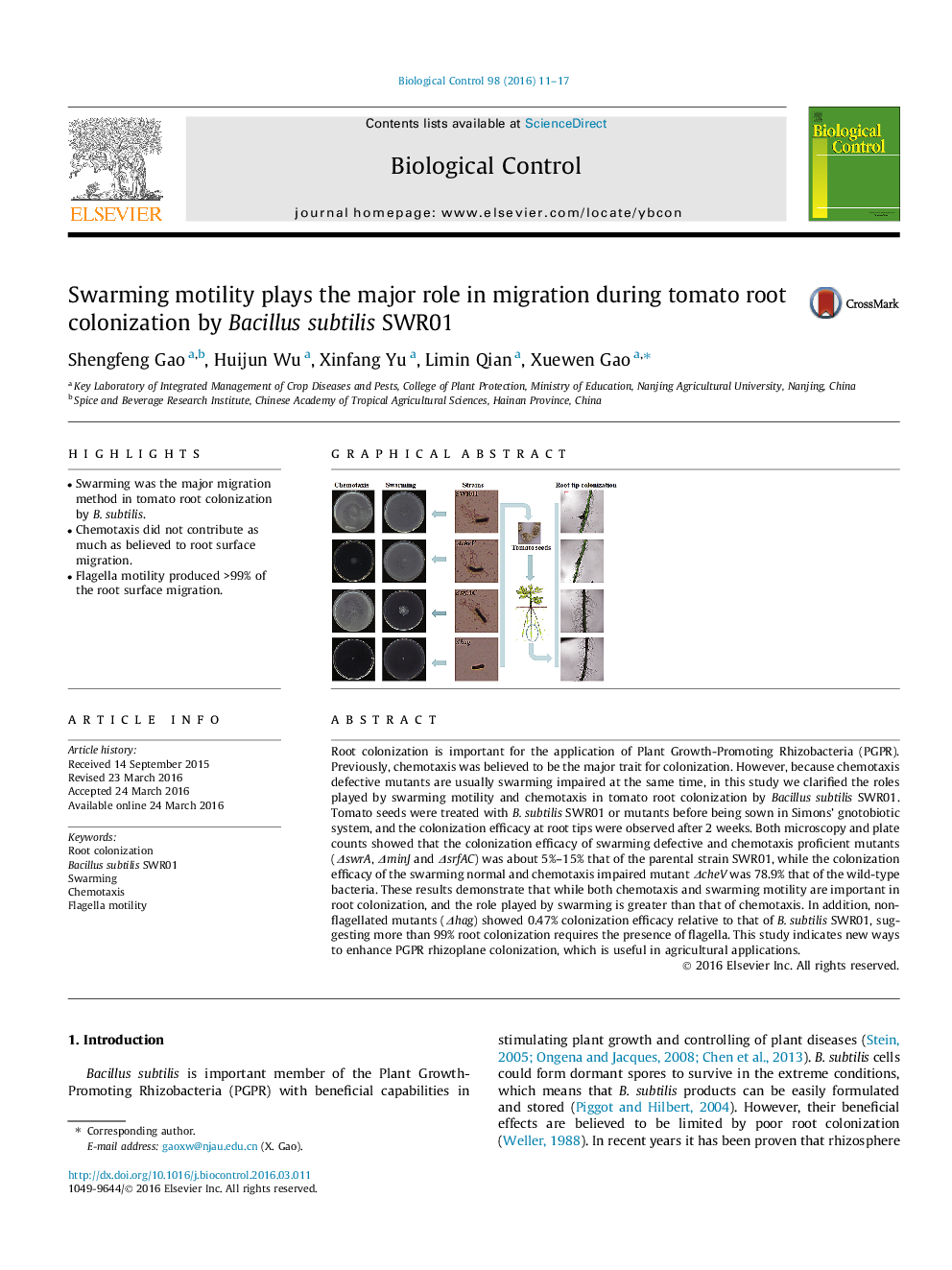| Article ID | Journal | Published Year | Pages | File Type |
|---|---|---|---|---|
| 4503623 | Biological Control | 2016 | 7 Pages |
•Swarming was the major migration method in tomato root colonization by B. subtilis.•Chemotaxis did not contribute as much as believed to root surface migration.•Flagella motility produced >99% of the root surface migration.
Root colonization is important for the application of Plant Growth-Promoting Rhizobacteria (PGPR). Previously, chemotaxis was believed to be the major trait for colonization. However, because chemotaxis defective mutants are usually swarming impaired at the same time, in this study we clarified the roles played by swarming motility and chemotaxis in tomato root colonization by Bacillus subtilis SWR01. Tomato seeds were treated with B. subtilis SWR01 or mutants before being sown in Simons’ gnotobiotic system, and the colonization efficacy at root tips were observed after 2 weeks. Both microscopy and plate counts showed that the colonization efficacy of swarming defective and chemotaxis proficient mutants (ΔswrA, ΔminJ and ΔsrfAC) was about 5%–15% that of the parental strain SWR01, while the colonization efficacy of the swarming normal and chemotaxis impaired mutant ΔcheV was 78.9% that of the wild-type bacteria. These results demonstrate that while both chemotaxis and swarming motility are important in root colonization, and the role played by swarming is greater than that of chemotaxis. In addition, non-flagellated mutants (Δhag) showed 0.47% colonization efficacy relative to that of B. subtilis SWR01, suggesting more than 99% root colonization requires the presence of flagella. This study indicates new ways to enhance PGPR rhizoplane colonization, which is useful in agricultural applications.
Graphical abstractFigure optionsDownload full-size imageDownload as PowerPoint slide
